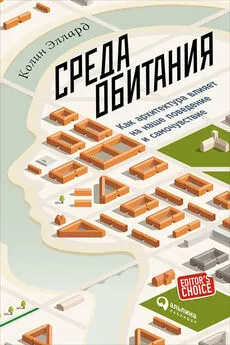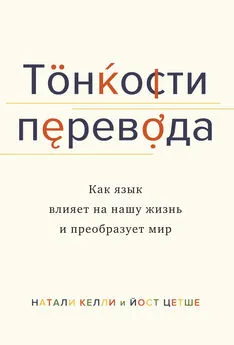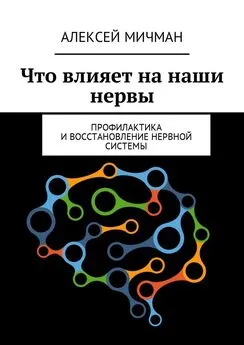Мэтью Джексон - Человеческие сети [Как социальное положение влияет на наши возможности, взгляды и поведение]
- Название:Человеческие сети [Как социальное положение влияет на наши возможности, взгляды и поведение]
- Автор:
- Жанр:
- Издательство:АСТ: CORPUS
- Год:2021
- Город:Москва
- ISBN:978-5-17-117364-7
- Рейтинг:
- Избранное:Добавить в избранное
-
Отзывы:
-
Ваша оценка:
Мэтью Джексон - Человеческие сети [Как социальное положение влияет на наши возможности, взгляды и поведение] краткое содержание
В формате PDF A4 сохранен издательский макет книги.
Человеческие сети [Как социальное положение влияет на наши возможности, взгляды и поведение] - читать онлайн бесплатно ознакомительный отрывок
Интервал:
Закладка:
Backstrom L., Boldi P., Rosa M., Ugander J., Vigna S. Four Degrees of Separation // Proceedings of the 4th Annual ACM Web Science Conference, 2012. P. 33–42.
Backstrom L., Kleinberg J. Romantic Partnerships and the Dispersion of Social Ties: A Network Analysis of Relationship Status on Facebook // Proceedings of the 17th ACM Conference on Computer Supported Cooperative Work & Social Computing, 2014. P. 831–841.
Badev A. Discrete Games in Endogenous Networks: Theory and Policy . 2017. arXiv preprint arXiv: 1705.03137.
Baig T., Goldfajn I. Financial Market Contagion in the Asian Crisis // IMF Staff Papers. 1999. Vol. 46. № 2. P. 167–195.
Bailey M., Cao R., Kuchler Th., Stroebel J. The Economics Effects of Social Networks: Evidence from the Housing Market . 2016. Доступно: https://ssrn.com/abstract=2753881.
Bailey M., Cao R., Kuchler Th., Stroebel J., Wong A. Measuring Social Connectedness . (2017) National Bureau of Economic ResearchWorking Paper № 23608.
Bajardi P., Poletto Ch., Ramasco J. J., Tizzoni M., Colizza V., Vespignani A. Human Mobility Networks, Travel Restrictions, and the Global Spread of 2009H1N1Pandemic // PLoS ONE. 2011. Vol. 6. № 1. Article № 16591.
Bala V., Goyal S. Learning From Neighbours // The Review of Economic Studies. 1998. Vol. 65. № 3. P. 595–621.
Bandiera O., Barankay I., Rasul I. Social Connections and Incentives in the Workplace: Evidence from Personnel Data // Econometrica. 2009. Vol. 77. P. 1047–1094.
Banerjee A. V. A Simple Model of Herd Behavior // The Quarterly Journal of Economics. 1992. Vol. 107. № 3. P. 797–817.
Banerjee A. V., Chandrasekhar A. G., Duflo E., Jackson M. O. Diffusion of Microfinance // Science. 2013. Vol. 341. № 6144. Article number 1236498, doi: 10.1126/science.1236498.
Banerjee A. V., Chandrasekhar A. G., Duflo E., Jackson M. O. Gossip and Identifying Central Individuals in a Social Network . 2015. Доступно: http://ssrn.com/abstract=2425379.
Banerjee A. V., Chandrasekhar A. G., Duflo E., Jackson M. O. Changes in Social Network Structure in Response to Exposure to Formal Credit Markets . Mimeo, Stanford University, 2018.
Banerjee A. V., Duflo E. Poor Economics: A Radical Rethinking of the Way to Fight Global Poverty . N. Y.: Public Affairs, 2012.
Banerjee A. V., Duflo E. Do Firms Want to Borrow More? Testing Credit Constraints Using a Directed Lending Program // The Review of Economic Studies. 2014. Vol. 81. P. 572–607.
Banfi E. C. The Moral Basis of a Backward Society . N. Y.: Free Press, 1958.
Barabási A.-L. Linked: The New Science of Networks . N. Y.: Basic Books, 2003.
Barabási A.-L. Bursts: The Hidden Patterns Behind Everything We Do, from Your E-mail to Bloody Crusades . N. Y.: Penguin, 2011.
Barabási A.-L. Network Science . Cambridge, U. K.: Cambridge University Press, 2016.
Barabási A.-L., Albert R. Emergence of Scaling in Random Networks // Science. 1999. Vol. 286. P. 509.
Barbera S., Jackson M. O. A Model of Protests, Revolution, and Information . 2017. Доступно: https://ssrn.com/abstract=2732864.
Barnes M., Kalberg K., Pan M., Leung P. When Is Brokerage Negatively Associated with Economic Benefits? Ethnic Diversity, Competition, and Common-Pool Resources // Social Networks. 2016. Vol. 45. P. 55–65.
Barnes M. L., Lynham J., Kalberg K., Leung P. Social Networks and Environmental Outcomes // Proceedings of the National Academy of Sciences. 2016. Vol. 113. P. 6466–6471.
Barnhardt Sh., Field E., Pande R. Moving to Opportunity or Isolation? Network Effects of a Randomized Housing Lottery in Urban India // American Economic Journal: Applied Economics. 2016. Vol. 9. № 1. P. 1–32.
Bartholomew R. E. Little Green Men, Meowing Nuns and Head-Hunting Panics: A Study of Mass Psychogenic Illness and Social Delusion . Jefferson, NC: McFarland, 2001.
Bassok D., Finch J. E., Lee R., Reardon S. F., Waldfogel J. Socioeconomic Gaps in Early Childhood Experiences: 1998 to 2010 // AERA Open. 2016. Vol. 2. № 3. Article № 2332858416653924.
Battiston P., Stanca L. Boundedly Rational Opinion Dynamics in Social Networks: Does Indegree Matter? // Journal of Economic Behavior & Organization. 2015. Vol. 119. P. 400–421.
Battiston S., Caldarelli G., May R. M., Roukny T., Stiglitz J. E. The Price of Complexity in Financial Networks // Proceedings of the National Academy of Sciences. 2016. Vol. 113. № 36. P. 10031–10036.
Beaman L. A. Social Networks and the Dynamics of Labour Market Outcomes: Evidence from Refugees Resettled in the U. S. // Review of Economic Studies. 2012. Vol. 79. № 1. P. 128–161.
Beaman L. A., BenYishay A., Magruder J., Mobarak A. M. Making Networks Work for Policy: Evidence from Agricultural Technology Adoption in Malawi . Working Paper, Northwestern University, 2015.
Beaman L. A., Keleher N., Magruder J. Do Job Networks Disadvantage Women? Evidence from a Recruitment Experiment in Malawi . 2016. Не опубликовано, http://faculty.wcas.northwestern.edu/~lab823/BKMrecruitmentOct2013.pdf.
Beaman L. A., Magruder J. Who Gets the Job Referral? Evidence from a Social Networks Experiment // The American Economic Review. 2012. Vol. 102. P. 3574–3593.
Bearman P. S., Moody J., Stovel K. Chains of Affection: The Structure of Adolescent Romantic and Sexual Networks // American Journal of Sociology. 2004. Vol. 110. № 1. P. 44–91.
Benhabib J., Bisin A., Jackson M. O. Handbook of Social Economics . Amsterdam: North-Holland, 2011.
Benzell S. G., Cooke K. A Network of Thrones: Kinship and Conflict in Europe, 1495–1918 . Рукопись. Boston University, 2016.
Berens G., Van Riel C. Corporate Associations in the Academic Literature: Three Main Streams of Thought in the Reputation Measurement Literature // Corporate Reputation Review. 2004. Vol. 7. P. 161–178.
Bertrand M., Mullainathan S. Are Emily and Greg More Employable Than Lakisha and Jamal? A Field Experiment on Labor Market Discrimination // The American Economic Review. 2004. Vol. 94. P. 991–1013.
Bikhchandani S., Hirshleifer D., Welch I. A Theory of Fads,Fashion, Custom, and Cultural Change as Informational Cascades // Journal of Political Economy. 1992. Vol. 100. № 5. P. 992–1026.
Bikhchandani S., Sharma S. Herd Behavior in Financial Markets // IMF Economic Review. 2000. Vol. 47. P. 279–310.
Bischoff K., Reardon S. F. Residential Segregation by Income, 1970–2009 // Diversity and Disparities: America Enters a New Century. N. Y.: The Russell Sage Foundation, 2014.
Bisin A., Verdier T. The Economics of Cultural Transmission and the Dynamics of Preferences // Journal of Economic Theory. 2001. Vol. 97. P. 298–319.
Blandy R. Marshall on Human Capital: A Note // Journal of Political Economy. 1967. Vol. 75. P. 874–875.
Blau P. M. Contrasting Theoretical Perspectives // The Micro-Macro Link. Berkeley: University of California Press, 1987. P. 71–85.
Bloch F., Genicot G., Ray D. Reciprocity in Groups and the Limits to Social Capital // The American Economic Review. 2007. Vol. 97. P. 65–69.
Bloch F., Jackson M. O., Tebaldi P. Centrality Measures in Networks . 2016. Доступно: http://ssrn.com/abstract=2749124.
Blondel V. D., Guillaume J.-L., Lambiotte R., Lefebvre E. FastUnfolding of Communities in Large Networks // Journal of Statistical Mechanics: Theory and Experiment. 2008. Vol. 100. Article № P10008.
Bloom N. The Impact of Uncertainty Shocks // Econometrica. 2009. Vol. 77. P. 623–685.
Blum A., Hopcroft J., Kannan R. Foundations of Data Science . Mimeo, Carnegie Mellon University, 2016.
Blume L. E., Brock W. A., Durlauf S. N., Ioannides Y. M. Identification of Social Interactions // Handbook of Social Economics. Amsterdam: North-Holland, 2011.Vol. 1. P. 853–964.
Blumenstock J., Tan X. Social Networks and Migration . Mimeo, University of Washington, 2017.
Blumer H. Race Prejudice as a Sense of Group Position // Pacific Sociological Review. 1958. Vol. 1. № 1. P. 3–7.
Blundell R., Pistaferri L., Preston I. Consumption Inequality and Partial Insurance // The American Economic Review. 2008. Vol. 98. P. 1887–1921.
Bobo L., Hutchings V. L. Perceptions of Racial Group Competition: Extending Blumer’s Theory of Group Position to a Multiracial Social Context // American Sociological Review. 1996. Vol. 61. P. 951–972.
Bollobas B. Random Graphs . 2nd ed. Cambridge, U. K.: Cambridge University Press, 2001.
Boneva T., Rauh Ch. Parental Beliefs About Returns to Educational Investments — The Later the Better? 2015. Доступно: https://ssrn.com/abstract=2764288.
Borgatti S. P. Centrality and Network Flow // Social Networks. 2005. Vol. 27. P. 55–71.
Borgatti S. P., Everett M. G. Notions of Position in Social Network Analysis // Sociological Methodology. 1992. Vol. 22. P. 1–35.
Borgatti S. P., Everett M. G., Johnson J. C. Analyzing Social Networks . Thousand Oaks, CA: Sage, 2018.
Borgatti S. P., Jones C., Everett M. G. Network Measures of Social Capital // Connections. 1998. Vol. 21. P. 27–36.
Bourdieu P. The Forms of Capital [на английском] // Handbook of Theory and Research for the Sociology of Education. Westport, CT: Greenwood Publishing Group, 1986. P. 241–258.
Bourdieu P., Passeron J.-C. La reproduction. Éléments pour une théorie du système d’enseignement . Paris: Les Éditions de Minuit, 1970.
Bourguignon F., Morrisson Ch. Inequality Among World Citizens: 1820–1992 // The American Economic Review. 2002. Vol. 92. P. 727–744.
Boustan L. P. Competition in the Promised Land: Black Migrants in Northern Cities and Labor Markets . Princeton, N. J.: Princeton University Press, 2016.
Bowles S., Smith E. A., Borgerhoff Mulder M. eds. IntergenerationalWealthTransmissionandInequalityin Premodern Societies // Current Anthropology. Special Issue. 2010. Vol. 51. № 1.
Boxell L., Gentzkow M., Shapiro J. M. Greater Internet Use Is Not Associated with Faster Growth in Political Polarization Among U. S. Demographic Groups // Proceedings of the National Academy of Sciences. 2017. Vol. 114. № 40. P. 10612–10617.
Boyd R., Richerson P. J. Culture and the Evolutionary Process . Chicago: University of Chicago Press, 1988.
Bradbury K. Trends in U. S. Family Income Mobility, 1969–2006 . Federal Reserve Bank of Boston, 2011. Working Paper № 11–10.
Bramoullé Y., Rogers B. W. Diversity and Popularity in Social Networks . (2010) CIRPEE Working Paper № 09–03.
Branch B. The Costs of Bankruptcy: A Review // International Review of Financial Analysis. 2002. Vol. 11. № 1. P. 39–57.
Brandts J., Giritligil A. E., Weber R. A. An Experimental Study of Persuasion Bias and Social Influence in Networks // European Economic Review. 2015. Vol. 80. P. 214–229.
Breen R., Jonsson J. O. Inequality of Opportunity in Comparative Perspective: Recent Research on Educational Attainment and Social Mobility // Annual Review of Sociology. 2005. Vol. 31. P. 223–243.
Breiger R., Pattison P. Cumulated Social Roles: The Duality of Persons and Their Algebras // Social Networks. 1986. Vol. 8. P. 215–256.
Читать дальшеИнтервал:
Закладка:
![Обложка книги Мэтью Джексон - Человеческие сети [Как социальное положение влияет на наши возможности, взгляды и поведение]](/books/1061636/metyu-dzhekson-chelovecheskie-seti-kak-socialnoe-po.webp)









